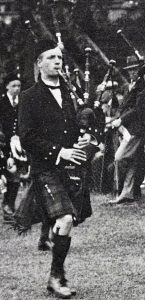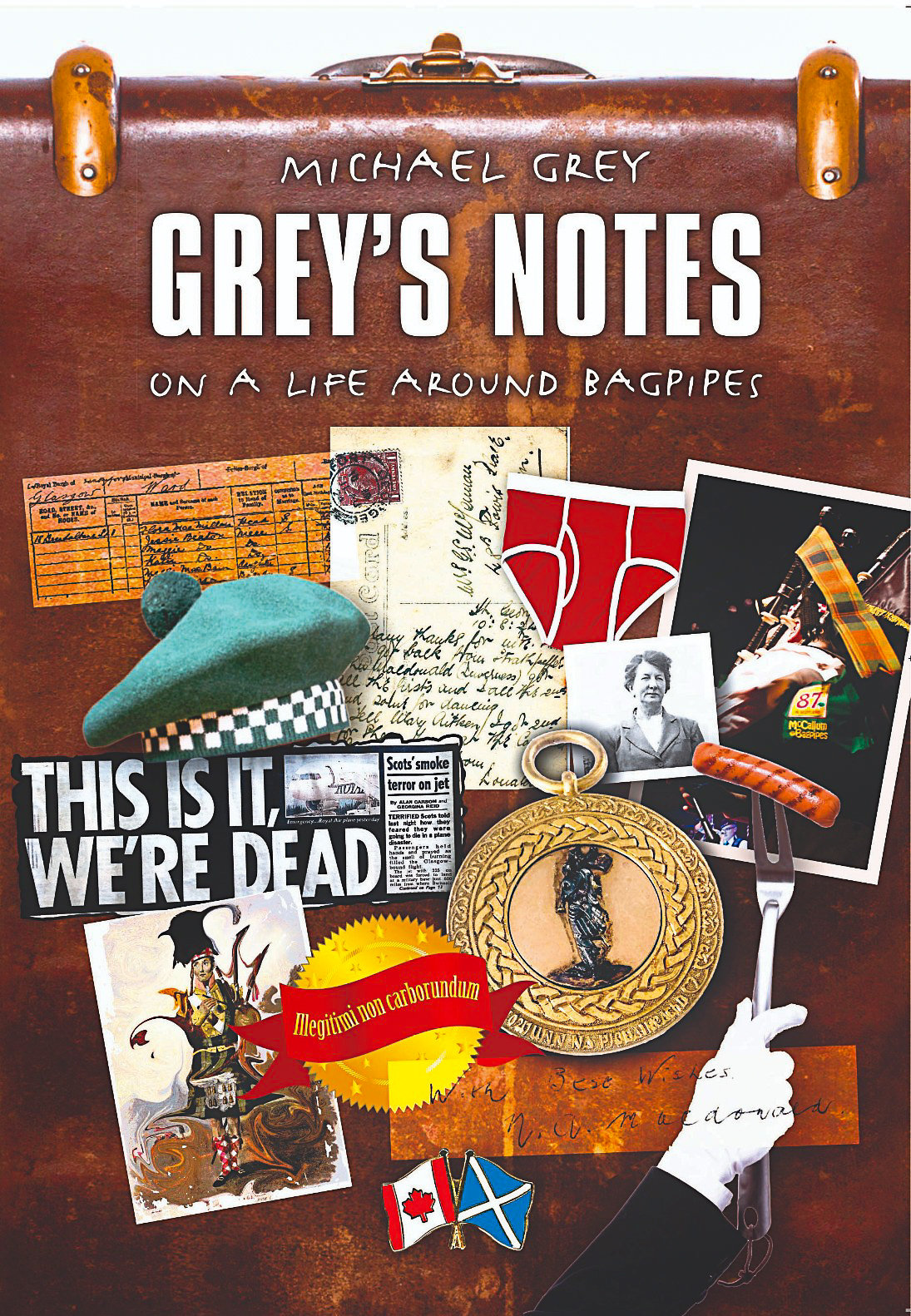Tunes from John Wilson (1906 – 1979)
May 29, 2019 on 4:51 pm by Michael Grey | In Audio File, Solo Piping, Stories, Video | Comments Off on Tunes from John Wilson (1906 – 1979)There aren’t a lot of easily available recordings of great players of the past – especially the long past. Here are a few samples from the great John Wilson. I no longer assume people know of him, or, for that matter, almost any of the greats of the not-so-distant-past.
John Wilson was born in Edinburgh. He came from a piping family, his Uncle John, for instance, was “The Baldooser” (how’s that for a nickname). You can find the jig named “The Baldooser” in Willie Ross’s first book. John Wilson took to the pipes very young and, even then, was a good player. His life changed forever when as a kid in Edinburgh he was playing on the beach with a detonator (as one did) and blew off big parts of his left hand. He always noted in the story’s telling that this happened the day before the Great War’s Armistice in 1918; the irony appealed to him, I’m sure.
Well John Wilson took his now-mauled hand, healed and sought out the best teachers he could find. The great Roddie Campbell was at the centre of his teaching and by the time Wilson was 19 years old he had won the Gold Medal at Oban. Surely this achievement alone is an exceptional example of spirit and grit. John Wilson would go on to win everything on offer. He had a great competitive career, published three excellent books of pipe music and lead an adventure-filled life. His first book, published in 1937 is one of the best ever. At the time it was considered something of a bible for jig repertoire. And yet, it’s in this book that the world was introduced to the evergreen reel, John Morrison of Assynt House. He published his autobiography, A Professional Piper in Peace and War, in 1979, not long before he died.

As a young teenager I had a few years of tuition with him in his last years. He surely did intimidate me but I loved our lessons. Before I took private sessions with him I’d be part of a semi-private class in the 48th Highlanders’ band room at Moss Park Armouries in downtown Toronto. He never owned a driver’s license and I wasn’t old enough to drive; this way of things meant we had many great chats riding the street car and subway north to our suburban homes.
John Wilson was a teaching machine and in the 30 years he lived in Canada he almost single-handedly transformed the standard of piping in Ontario – for the better, of course.
So to Alistair Murray of Pittsburgh who was asking for some recordings, here you go:
Lament for Captain McDougall
I hadn’t listened to these recordings in decades. I was expecting a little more “go” in his Captain McDougall. Not that it’s slow I just had it in my mind’s ear that he played the big stuff with more tempo. For the ceolaphiles: note in the second last bar of the ground he plays all five quarter note groupings, not the often-played omitted C-E of the third pulse. No surprise when we look to who taught Roddie Campbell: John McDougall Gillies. The Piobaireachd Society offers editorial related to the story. It seems JMG received guidance from Robert Meldrum on the tune and RM had old notes that directed the piper to “play the part exactly as written”. Nice to hear, too, John Wilson’s treatment of the breabach where he pauses on each connecting couplet of the crunluath. This style is not heard very often today, it seems to me.
Jigs
There is just no denying that John Wilson had fine technique. You may listen to these jigs and think they sound odd, or over-pointed or just a lot different from what you’re used to hearing. Wilson is a man of his time and this is how jigs were played. They weren’t played much in bands and they were never played alongside other instruments. In fact, Wilson was among the early adopters who embraced the four-parted competition jig. I love the style. Try playing like this – it is not easy. As for the level of difficulty of the tunes. Yikes. You don’t get more challenging than the first two jigs in his set. For the record, if you play “The Loch Ness Monster” you really shouldn’t omit the F doublings before the E strikes. I asked Wilson about this once – so much easier, I thought – and he said, “that is why Peter MacLeod called it the bloody Loch Ness Monster!”
March, Strathspey & Reel
Now this is how I recall his playing. There is no shortage of vim and vigour in this set. Pure confidence. A great style to his playing and one that would get him nowhere on the boards today, I wager. I’m torn when it comes to his popular composition Tom Kettles: more hornpipe than reel?
It’s easy, maybe, to zero in on flaws in the sound of the bagpipe. The pipe sound was a product of its time. Bill Livingstone told me the other day that at a lesson not long after the vinyl was pressed John Wilson asked him what he thought of the record. Bill, not one then, especially, to keep opinions close, replied with something like, “well, John, the playing is great, of course, but the pipe … sharp D, flat F, keen high A …” – and so on. Bill recalls John reflecting back a cold, silent, withering stare. The lesson learned for Bill, I think, is that not all things need to be said.
Great tunes on a great set of MacDougall of Aberfeldy pipes – all from a great man. Here’s to John Wilson!
M.
No Comments yet
Sorry, the comment form is closed at this time.
Dunaber is using WordPress customized and designed by Yoann Le Goff from A Eneb Productions.
 Entries and comments
feeds.
Valid XHTML and CSS.
Entries and comments
feeds.
Valid XHTML and CSS.


